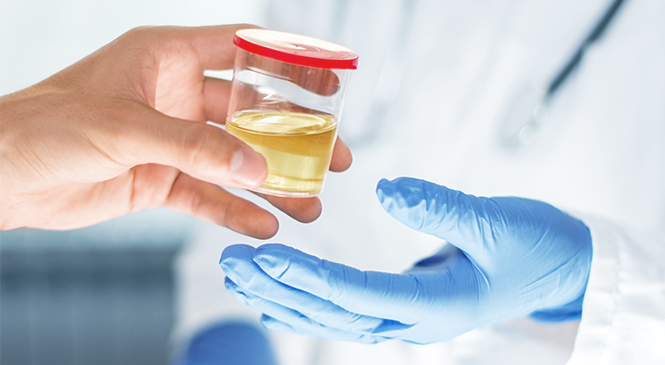Work Drug Safe
Work Drug Safe

This information is provided for educational purposes only. Reader retains full responsibility for the use of the information contained herein.
Employers have a myriad of viable options available when choosing a drug testing method ... In fact, in many instances, the combination of different methods enhances a company’s opportunity to achieve its drug testing objectives.
Drug testing works! It has proven to be a powerful deterrent to illicit drug use and an effective means of identifying people who need help. Today, employers have a myriad of viable options available when choosing a drug testing method to best meet their needs. In fact, in many instances, the combination of different methods enhances a company’s opportunity to achieve its drug testing objectives.
Following is a brief overview of the key qualities of the three major drug testing methods: urine, oral fluid and hair:
Urine Testing—The most common drug testing method; best at detecting lifestyle drug use.
Drug | Detection Window |
Benzodiazepines Ultra-short acting Short acting Intermediate acting Long acting |
Up to 12 hours Up to 1 day Up to 2-4 days Up to 7 days |
Barbiturates Shorter acting Long acting |
Up to 1-2 days Up to 7 days |
Methadone | Up to 1-2 days |
Amphetamines | Up to 1-3 days |
Methamphetamines | Up to 1-3 days |
Buprenorphine/Subutex Analgesic Therapeutic dose Maintenance dose |
Up to 1-3 days Up to 10-12 days |
Cannabinoids (THC) | Up to 1-4 days |
Cocaine | Up to 2-3 days |
Opiates | Up to 2-3 days |
Ketamine | Up to 3-5 days |
Tramadol | Up to 3-5 days |
Oral Fluid Testing—Best at detecting recent drug use.
Drug | Detection Window |
Cocaine | Up to 24 hours |
Benzodiazepines | Up to 24 hours |
Cannabinoids (THC) | Up to 24 hours |
Methamphetamines | Up to 24 hours |
Opiates Morphine Codeine | Up to 1-2 days Up to 24 hours Up to 1-2 days |
Amphetamine | Up to 1-2 days |
Buprenorphine | Up to 1-2 days |
Ketamine | Up to 1-2 days |
Methadone | Up to 1-2 days |
Hair Testing—Best at detecting historic drug use.
Conclusion
At a time when drug abuse, especially marijuana use, is going up and more workplace drug tests are coming back positive, drug testing has never been more important. It helps to deter drug use and identify those who need help. Lab-based urine, oral fluid or hair testing or single-use, instant-result devices with urine or oral fluid represent viable options that can help a company make a good-faith effort ensure their places of business are free of the negative impact of workplace drug abuse.
Editor’s Notes:
Explanation of acronyms used in this document.
POCT—stands for “point-of-collection” or “point-of-care” testing. POCT typically involves the use of a single-use, disposable device that yields a rapid qualitative (yes or no) result at the site of the test or collection. Both urine and oral fluid POCT devices are commonly available.
OFMG—stands for “oral fluid mandatory guidelines.” The OFMG are drug testing guidelines issued by the Substance Abuse and Mental Health Services Administration (SAMHSA) for federal workplace drug testing programs. It is anticipated that the U.S. Department of Transportation will eventually permit lab-based oral fluid drug testing by DOT-covered employers by adopting the OFMG.
DOT—stands for U.S. Department of Transportation.
Drug Safe Workplace
©2025 Abbott. All rights reserved. Unless otherwise specified, all product and service names appearing in this Internet site are trademarks owned by or licensed to Abbott, its subsidiaries or affiliates. No use of any Abbott trademark, trade name, or trade dress in this site may be made without the prior written authorization of Abbott, except to identify the product or services of the company.
This website is governed by applicable U.S. laws and governmental regulations. The products and information contained herewith may not be accessible in all countries, and Abbott takes no responsibility for such information which may not comply with local country legal process, regulation, registration and usage.
Your use of this website and the information contained herein is subject to our Website Terms and Conditions and Privacy Policy.
Abbott - A Global Leader in Toxicology.
Links which take you out of Abbott worldwide websites are not under the control of Abbott, and Abbott is not responsible for the contents of any such site or any further links from such site. Abbott is providing these links to you only as a convenience, and the inclusion of any link does not imply endorsement of the linked site by Abbott. The website that you have requested also may not be optimised for your screen size.